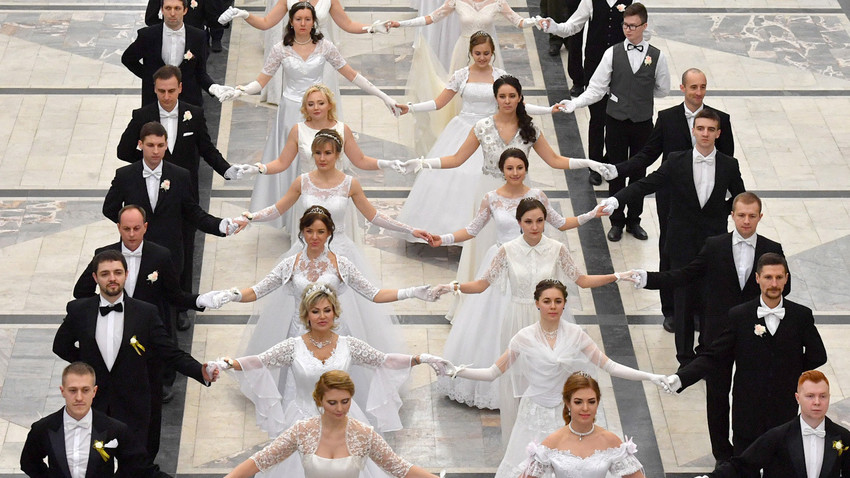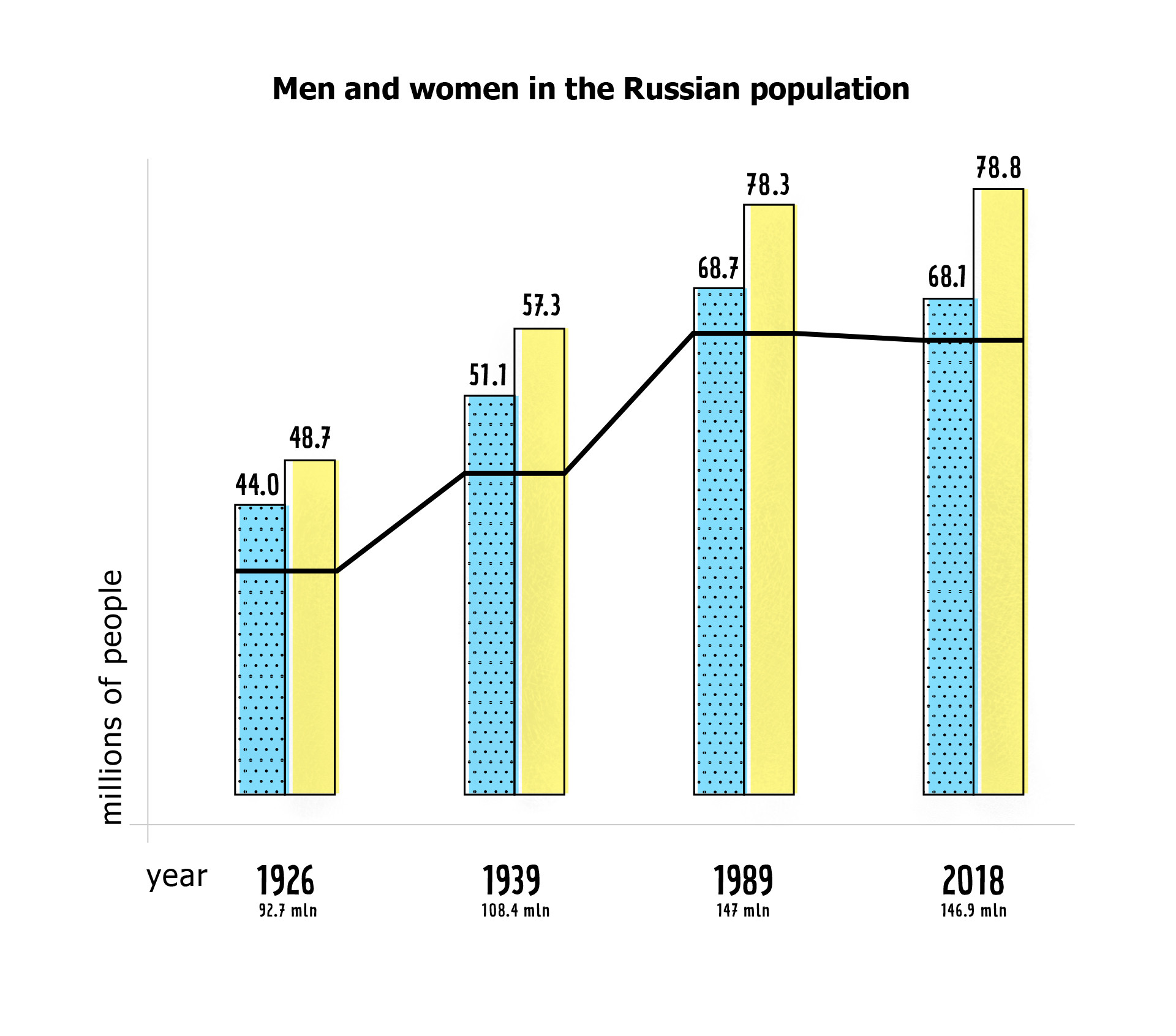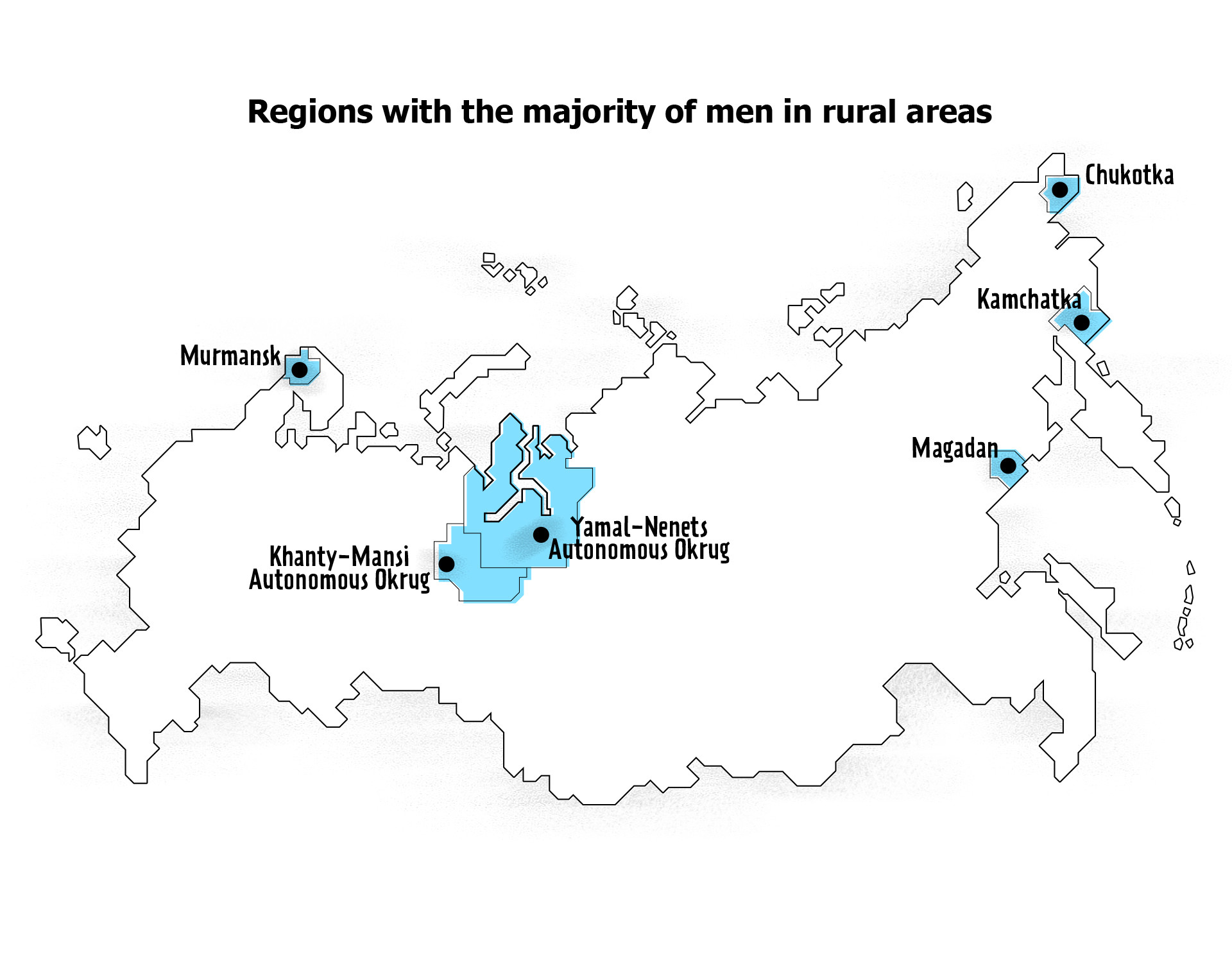
In 2018 the Russian Federal State Statistics Service (Rosstat) tallied up the population for its “Men and Women of Russia” report – it revealed that 146.9 million people live in the country, with 68.1 million (46 percent) males and 78.8 million (54 percent) females


Velikiy Novgorod is a land of babushkas. “There are so many of them, I don’t see as many middle-aged women [anywhere else],” says Anna from Veliky Novgorod. “You go into a shop – grannies are everywhere. You walk your dog – it seems all other dog-owners are babushkas.” Ekaterina from the same city confirms that the gender gap wasn’t so huge for younger generations: in her youth, in the 1990s, she didn’t witness any significant shortage of young men.
This tendency is prevalent in Russia where there are more old women than old men. There are, however, regions with harsh living conditions where men make up the majority of the population – but only in rural areas. They are the Murmansk, Chukotka, Kamchatka, and Magadan regions, and the Yamal-Nenets and Khanty-Mansi Autonomous Okrugs. All are located in Siberia.

As the Rosstat report shows, women seem to run the country. Seventy-two percent of Russian civil servants are female, while within bodies of municipal authority there
At the same time, among economically active Russians (aged 15-72), the two sexes are almost equally represented (37 million men and 35 million women). Education, healthcare, and sales are the areas where women are significantly prevalent.
If using any of Russia Beyond's content, partly or in full, always provide an active hyperlink to the original material.
Subscribe
to our newsletter!
Get the week's best stories straight to your inbox